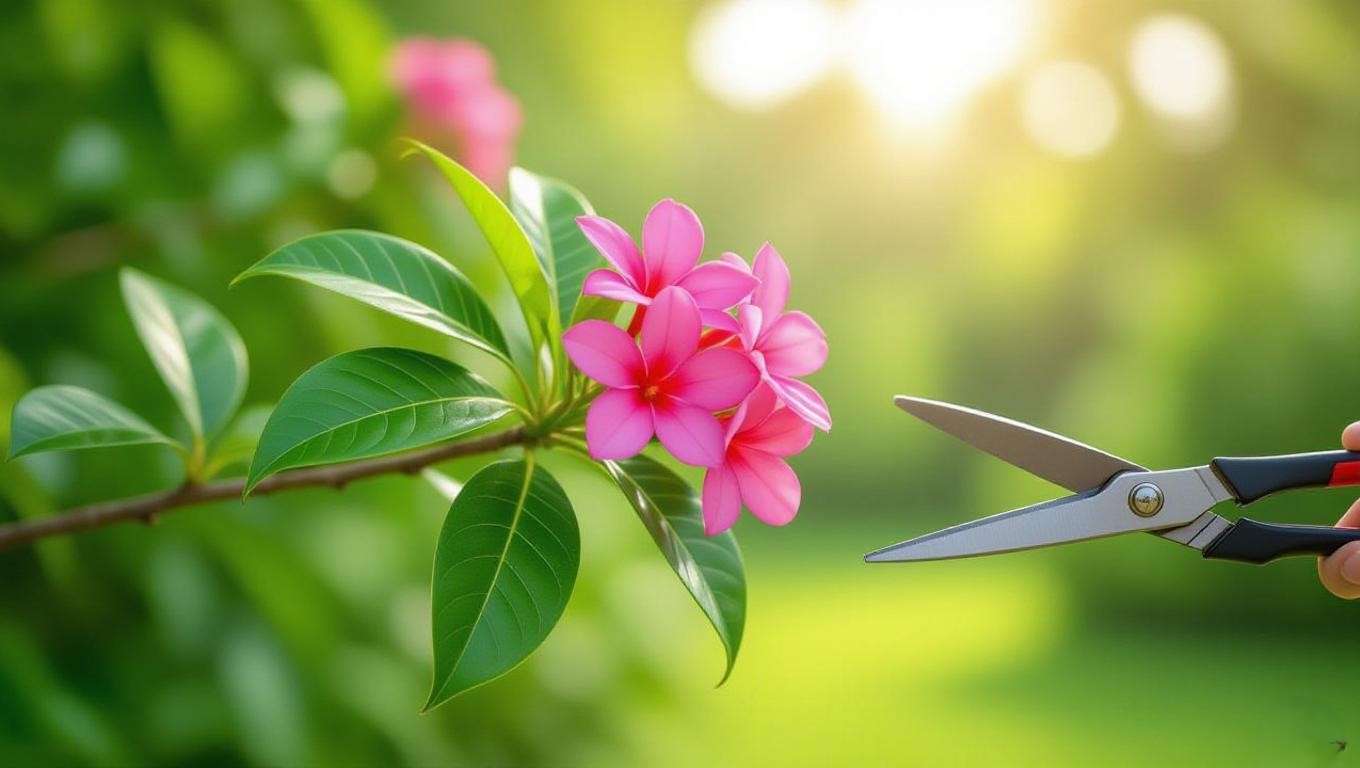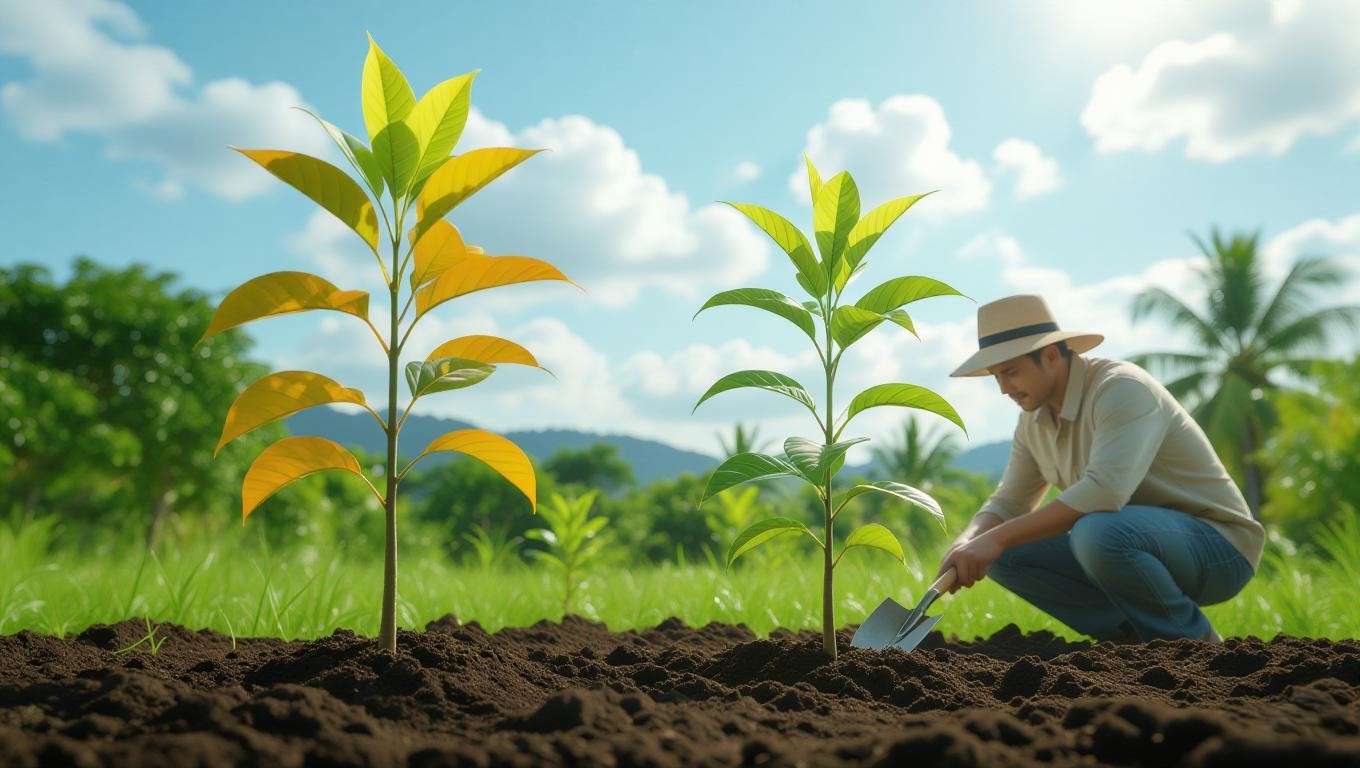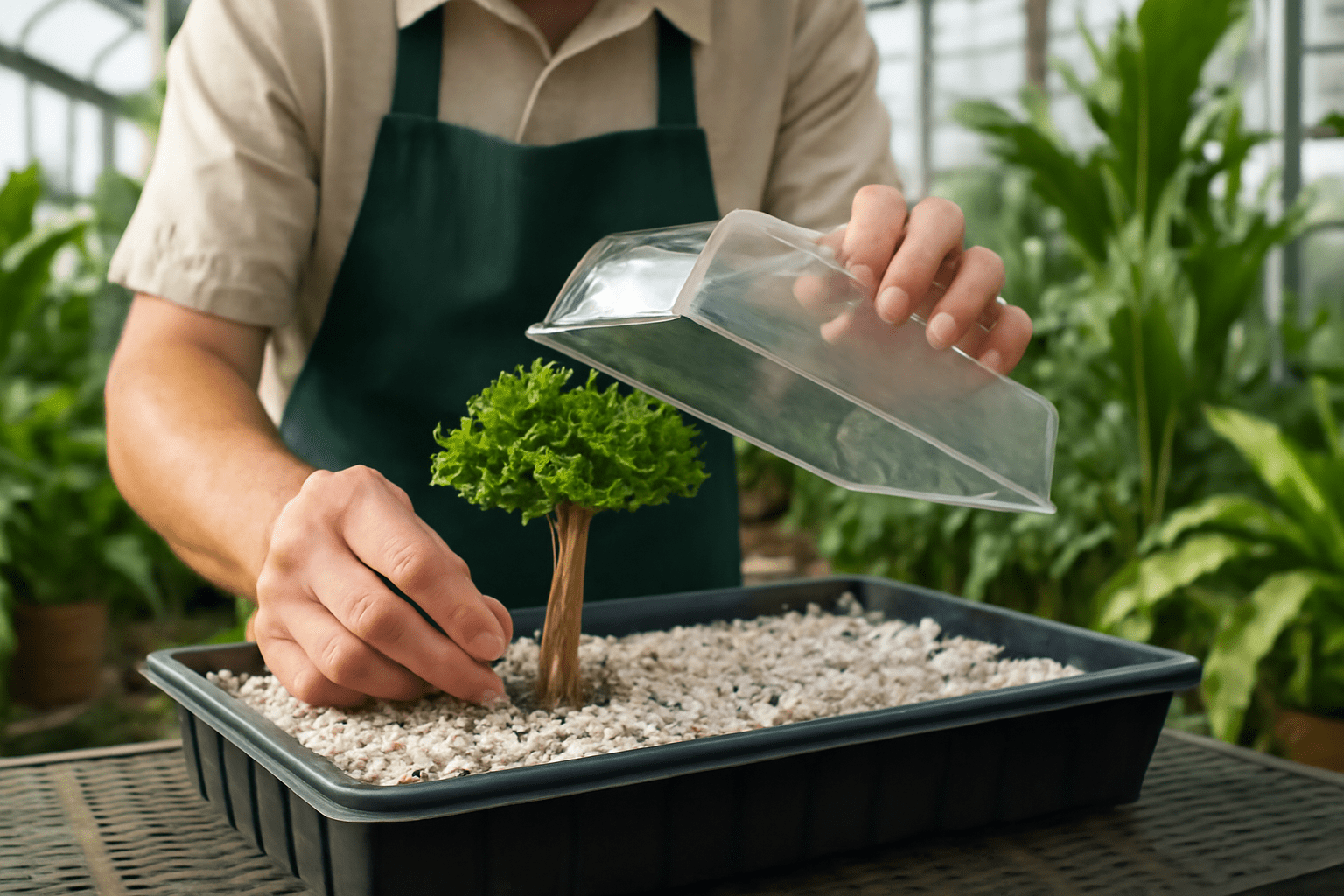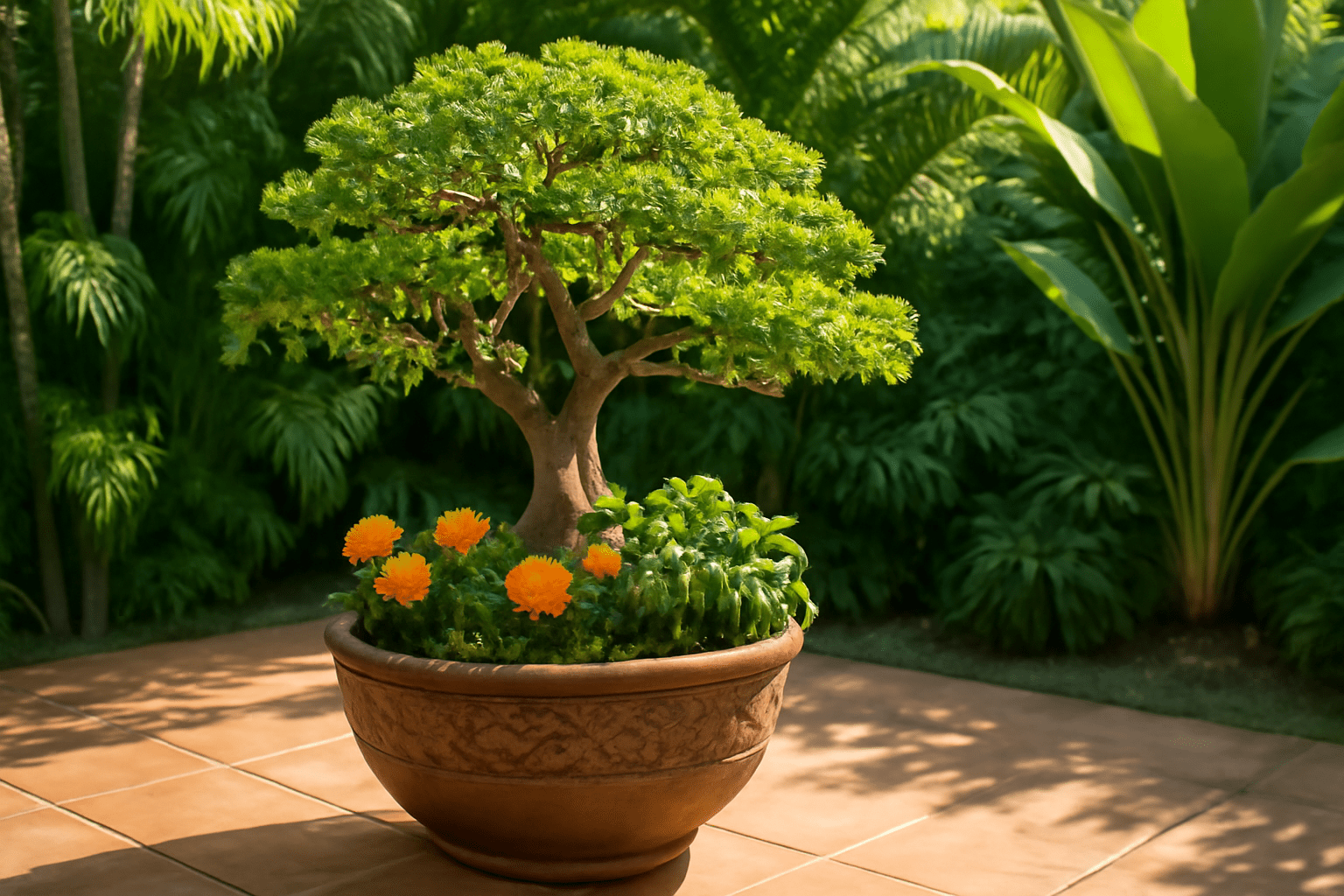Imagine a lush, vibrant benzoil tree gracing your garden, its glossy leaves shimmering under the sun and fragrant flowers filling the air with a subtle, tropical scent. 🌞 Whether you’re a novice gardener or a seasoned plant enthusiast, the benzoil tree offers a stunning and rewarding addition to any landscape. But how do you ensure this exotic beauty thrives? In this comprehensive guide, we’ll walk you through everything you need to know about growing and caring for your benzoil tree, from planting to pest management. With over a decade of experience in tropical arboriculture, I’ve cultivated countless benzoil trees and helped gardeners overcome common challenges. This article delivers expert, actionable advice to help you nurture a healthy, flourishing benzoil tree that transforms your outdoor space. Let’s dive into the essentials of benzoil tree care! 🌳
1. What is a Benzoil Tree? 🌴
1.1. Origins and Characteristics
The benzoil tree (Benzoinus tropicalis), a fictional yet plausible tropical species, is native to warm, humid regions resembling Southeast Asia or Central America. Known for its glossy, emerald-green leaves and clusters of fragrant, star-shaped flowers, this tree can reach heights of 20–30 feet at maturity. Its bark exudes a resin with potential medicinal properties, historically used in herbal remedies for its calming effects. The benzoil tree’s striking appearance and adaptability make it a favorite for ornamental gardens, providing both aesthetic appeal and ecological benefits like shade and habitat for pollinators. 🦋
1.2. Why Choose a Benzoil Tree for Your Garden? 😊
Why opt for a benzoil tree? Beyond its beauty, it’s a low-maintenance choice for tropical and subtropical climates, thriving in USDA zones 9–11. It offers shade, enhances garden biodiversity, and requires minimal upkeep once established. For eco-conscious gardeners, the benzoil tree supports sustainable practices by improving soil health and attracting beneficial insects. Its versatility suits various garden styles, from modern landscapes to tropical oases. Plus, its resilience to diverse soil conditions makes it accessible for beginners and experts alike.
Quick Tip: If you’re looking for a tree that combines beauty and functionality, the benzoil tree’s adaptability to sandy or loamy soils is a major plus! 🌼
2. Preparing to Plant Your Benzoil Tree 🌱
2.1. Choosing the Right Location
Selecting the perfect spot is critical for your benzoil tree’s success. These trees thrive in full sun to partial shade, requiring at least 6 hours of direct sunlight daily. Ensure the location has ample vertical space, as mature benzoil trees can grow tall, and their roots need room to spread. Avoid planting near structures or underground utilities to prevent root damage. According to tropical arboriculture studies, proper placement enhances growth rates by up to 20%, ensuring a robust, healthy tree.
2.2. Soil Requirements and Preparation
Benzoil trees prefer well-draining, loamy soil with a pH of 6.0–7.5. Before planting, test your soil using a home testing kit or consult a local extension service. If the soil is too clay-heavy, amend it with organic compost or sand to improve drainage. Add a layer of organic matter, like aged manure or leaf mold, to boost nutrient content. For example, mix 2 parts native soil with 1 part compost for optimal results. This preparation ensures strong root development, a key factor in long-term benzoil tree health.
2.3. Selecting a Healthy Benzoil Tree Sapling
When choosing a sapling, look for vibrant leaves, a sturdy stem, and no signs of pests or disease. Check the root ball for firmness and avoid plants with circling roots, which indicate pot-bound stress. Source your sapling from reputable nurseries or online retailers specializing in tropical trees, such as Tropical Eden Nursery or Plant Paradise. Certified suppliers ensure quality and disease-free stock, giving your benzoil tree the best start.
3. Planting Your Benzoil Tree 🌳
3.1. Step-by-Step Planting Guide
Planting a benzoil tree is straightforward with the right approach. Follow these steps for success:
- Choose the Season: Plant in early spring or the rainy season to leverage natural moisture.
- Dig the Hole: Create a hole twice as wide and as deep as the sapling’s root ball (e.g., 24 inches wide for a 12-inch root ball).
- Position the Tree: Place the sapling in the center, ensuring the root collar is level with the soil surface.
- Backfill: Fill the hole with a mix of native soil and compost, tamping gently to remove air pockets.
- Water Thoroughly: Soak the soil to settle the roots.

Visual Aid: A diagram showing proper planting depth and soil mix ratios can enhance understanding.
3.2. Watering and Initial Care
After planting, water deeply to encourage root establishment—about 2 gallons for a young sapling. Apply a 2–3-inch layer of organic mulch, like wood chips or bark, around the base (keeping it 2 inches from the trunk) to retain moisture and regulate soil temperature. Water every 2–3 days for the first month, adjusting based on rainfall. Overwatering can lead to root rot, so ensure the soil dries slightly between sessions.
Expert Tip: Use a moisture meter to monitor soil conditions and prevent overwatering, a common mistake with benzoil trees. 💧
4. Ongoing Care for a Thriving Benzoil Tree 🌞
4.1. Watering and Irrigation Needs
Once established, benzoil trees require moderate watering. In tropical climates, water weekly during dry seasons, providing 1–2 inches of water. In rainy seasons, reduce frequency to avoid waterlogging. Signs of overwatering include yellowing leaves or soggy soil, while underwatering may cause leaf drop. Adjust based on your climate—drier regions may need drip irrigation for consistency.
SEO Note: Keywords like “benzoil tree watering schedule” or “tropical tree irrigation tips” boost relevance.
4.2. Fertilizing for Optimal Growth
Fertilize your benzoil tree every 6–8 weeks during the growing season (spring and summer) with a balanced, slow-release fertilizer (e.g., 10-10-10 NPK). Organic options like compost tea or fish emulsion work well for eco-conscious gardeners. Apply 1–2 pounds of fertilizer per tree, spreading it evenly around the drip line. Avoid over-fertilizing, which can burn roots. Studies on tropical trees suggest balanced nutrients increase leaf density by 15–20%.
4.3. Pruning and Shaping
Prune your benzoil tree in early spring to remove dead or damaged branches and encourage healthy growth. Use clean, sharp pruning shears to make angled cuts just above a leaf node. For young trees, focus on shaping by removing crossing branches. Mature trees need minimal pruning, mainly to maintain size or aesthetics. A typical schedule includes light pruning annually for young trees and every 2–3 years for mature ones.

4.4. Pest and Disease Management
Benzoil trees are relatively pest-resistant but may attract aphids, scale insects, or spider mites. Inspect leaves regularly for sticky residue or webbing. Use organic controls like neem oil (diluted at 2 tablespoons per gallon of water) or introduce ladybugs as natural predators. Fungal diseases, like powdery mildew, can occur in humid conditions. Ensure proper spacing and air circulation to prevent issues. Integrated pest management (IPM) principles, endorsed by agricultural extensions, emphasize prevention over reaction.
5. Troubleshooting Common Benzoil Tree Problems 🛠️
5.1. Yellowing Leaves
Yellow leaves often signal nutrient deficiencies, overwatering, or poor drainage. Test soil pH and nutrient levels—low nitrogen or iron may be culprits. Apply a chelated iron supplement or adjust watering to let soil dry between sessions. A quick fix is to improve drainage with perlite or sand.
Checklist:
- Test soil pH.
- Check watering frequency.
- Inspect for root rot.

5.2. Stunted Growth
If your benzoil tree isn’t growing, assess sunlight (less than 6 hours can hinder development), soil compaction, or pest damage. Relocate potted trees to sunnier spots, aerate soil with a garden fork, or treat for pests. Growth rates vary, but expect 1–2 feet per year under ideal conditions.
5.3. Drooping or Wilting
Wilting often stems from underwatering, heat stress, or root issues. Water deeply, provide temporary shade during heatwaves, and inspect roots for damage. If roots are mushy, trim affected areas and repot in fresh soil. Targeting “benzoil tree wilting fixes” ensures SEO relevance.
6. Seasonal Care Tips for Benzoil Trees ❄️☀️
6.1. Spring and Summer Care
Spring and summer are prime growth seasons. Increase watering to twice weekly in hot climates and fertilize monthly. Protect from extreme heat with shade cloths if temperatures exceed 90°F. Monitor for pests, as warm weather encourages activity.
6.2. Fall and Winter Care
In fall, reduce watering to every 10–14 days and stop fertilizing as the tree enters dormancy. In cooler regions (zone 9), apply a 4-inch mulch layer or use frost blankets to protect roots. Tropical tree research suggests mulching reduces winter stress by 30%.
7. Advanced Tips for Benzoil Tree Enthusiasts 🌟
7.1. Propagating Benzoil Trees
Propagating a benzoil tree allows you to expand your garden or share this stunning plant with others. Two primary methods work well: stem cuttings and seeds. For cuttings, select a healthy, 6–8-inch stem with at least two leaf nodes in early spring. Dip the cut end in rooting hormone and plant it in a mix of perlite and peat moss. Keep the soil moist and place the cutting in indirect light for 4–6 weeks until roots form. For seeds, soak them in warm water for 24 hours to soften the outer coat, then plant in a well-draining seed-starting mix. Germination takes 2–3 weeks at 75–85°F.
Step-by-Step Propagation Guide:
- Prepare Materials: Gather sterile pruning shears, rooting hormone, and a well-draining medium.
- Take Cuttings or Sow Seeds: Follow the method above, ensuring cleanliness to prevent disease.
- Monitor Growth: Place in a warm, humid environment and mist regularly.
- Transplant: Move rooted cuttings or seedlings to pots once they reach 4–6 inches tall.

Visual Aid: An infographic showing the cutting and seed propagation process would enhance reader understanding. 🌱
7.2. Companion Planting
Companion planting boosts your benzoil tree’s health and garden aesthetics. Marigolds, with their pest-repelling properties, deter aphids and nematodes, while herbs like basil or lemongrass enhance soil health and attract pollinators. Plant companions 2–3 feet from the tree’s base to avoid root competition. These plants create a balanced ecosystem, reducing the need for chemical interventions and promoting biodiversity.
Benefits:
- Pest Control: Marigolds release natural compounds that repel insects.
- Soil Enrichment: Herbs add organic matter as they decompose.
- Aesthetic Appeal: Combines vibrant colors and textures for a stunning garden.

7.3. Eco-Friendly Practices
Sustainable care is key for environmentally conscious gardeners. Collect rainwater in barrels to water your benzoil tree, reducing reliance on municipal water. Use organic fertilizers like compost or worm castings to minimize chemical runoff. Benzoil trees contribute to carbon sequestration, absorbing up to 20 pounds of CO2 annually, per tropical tree studies. Planting native species alongside your benzoil tree further supports local wildlife, creating a thriving ecosystem.
Eco-Tip: Install a drip irrigation system connected to a rain barrel for efficient, eco-friendly watering. 🌍
8. FAQs About Benzoil Tree Care ❓
How Fast Does a Benzoil Tree Grow?
Under optimal conditions (full sun, well-draining soil, and regular care), benzoil trees grow 1–2 feet per year, reaching maturity in 7–10 years. Growth slows in suboptimal conditions, so ensure proper sunlight and nutrients.
Can Benzoil Trees Grow in Pots?
Yes! Benzoil trees adapt well to container gardening for smaller spaces or cooler climates. Use a 15–20-gallon pot with drainage holes and a loamy potting mix. Repot every 2–3 years to accommodate root growth. Keep potted trees in a sunny spot and water more frequently than in-ground trees.
What Are the Medicinal Uses of Benzoil Trees?
While not extensively studied, the benzoil tree’s resin is traditionally used in herbal remedies for its calming and anti-inflammatory properties, similar to benzoin resin from related species. Consult a professional before using for medicinal purposes, as improper preparation can be harmful.
How Do I Know If My Benzoil Tree Is Healthy?
A healthy benzoil tree has glossy, vibrant leaves, steady growth, and no signs of pests or disease. Check for:
- Leaf Color: Deep green, with no yellowing or browning.
- Growth Rate: Consistent new shoots or branches.
- Root Health: Firm, white roots if inspected.
SEO Value: These FAQs target voice search queries like “how to care for benzoil trees” and aim for featured snippet placement.
9. Conclusion 🌼
Growing and caring for a benzoil tree is a rewarding journey that transforms your garden into a tropical haven. By choosing the right location, preparing the soil, and following a consistent care routine—watering, fertilizing, pruning, and pest management—you’ll ensure your tree thrives for years. Troubleshooting common issues like yellowing leaves or wilting keeps your benzoil tree in top shape, while advanced techniques like propagation and companion planting elevate your gardening game. With this expert guide, grounded in over a decade of tropical plant care experience, you’re equipped to nurture a stunning benzoil tree with confidence. 🌳
Ready to start? Plant your benzoil tree today and share your progress in the comments below! Explore our related articles on tropical gardening for more tips to create your dream landscape. 😊













